Publication 102 - Wisconsin Tax Treatment Of Tax-Option (S) Corporations And Their Shareholders Page 28
ADVERTISEMENT
Publication 102
AAA to $5,000 at year-end. The distribution is nontaxable federally
The corporation’s federal and Wisconsin AAA is increased by the
because it represents a distribution of previously taxed income.
$2,000 capital gain and decreased by the $10,000 ordinary loss,
leaving a AAA of negative $8,000.
For Wisconsin income tax purposes, the shareholder reports the
$25,000 of 1997 net income. The $25,000 increases the Wisconsin
The shareholder’s $9,000 federal and Wisconsin adjusted stock
AAA to $25,000. The first $25,000 of the distribution is nontaxable
basis is increased to $11,000 by the $2,000 capital gain and reduced
and decreases the AAA balance to zero at year-end. The $15,000
to $8,000 by the $3,000 distribution out of the AAA. The $3,000
balance of the distribution is nontaxable because it represents a
dividend distribution doesn’t reduce the shareholder’s stock basis.
distribution of income earned outside Wisconsin before the
The shareholder may deduct $8,000 of the corporation’s ordinary
shareholder became a Wisconsin resident.
loss, which reduces his stock basis to zero. The shareholder may
carry over the remaining $2,000 loss to future years.
Example 4: Assume the same facts as in Example 3, except that the
corporation’s federal AAA has a negative $10,000 balance on
O
January 1, 1997, because the corporation had incurred losses in
XI. SHAREHOLDER’S BASIS IN CAPITAL
prior years.
STOCK
For federal income tax purposes, the shareholder reports the
Through the end of a Subchapter S corporation’s 1978 tax-
$25,000 of 1997 net income. The $25,000 increases the federal
able year, each shareholder’s Wisconsin basis in the corpo-
AAA to $15,000. The first $15,000 of the distribution is nontaxable
ration’s capital stock equaled the shareholder’s original
and decreases the federal AAA to zero at year-end. The shareholder
investment (cost or other basis) plus additional capital
must report the remaining $25,000 of the distribution as a taxable
contributions made by the shareholder and minus distribu-
dividend.
tions of capital received.
For Wisconsin income tax purposes, the shareholder reports the
$25,000 of 1997 net income. The $25,000 increases the Wisconsin
Beginning with the 1979 taxable year (the first year to which
AAA to $25,000. The first $25,000 of the distribution is nontaxable
Wisconsin’s tax-option (S) law applies) and through the
and decreases the AAA balance to zero at year-end. The $15,000
1986 taxable year, a shareholder’s Wisconsin basis is
balance of the distribution is a taxable dividend.
increased (decreased) each year by his or her share of the
corporate net income (loss), as determined under Wisconsin
Example 5: For 1997, a calendar-year tax-option (S) corporation
law, for the year.
without accumulated earnings and profits has an ordinary loss of
$10,000 and capital gain income of $2,000 for federal and Wiscon-
Beginning with the 1987 taxable year, a shareholder’s
sin purposes. The corporation’s sole shareholder has a federal and
Wisconsin basis is increased by all items of income,
Wisconsin stock basis of $9,000 on January 1, 1997. The corpora-
including tax-exempt income, as determined under Wis-
tion distributes $6,000 to its shareholder during 1997.
consin law. Taxable income must be reported on the
The shareholder’s federal and Wisconsin stock basis for purposes
shareholder’s Wisconsin income tax return (if a return is
of determining the tax treatment of the distribution during 1997 is
required) for it to increase the shareholder’s Wisconsin
$11,000 ($9,000 adjusted basis on January 1 plus $2,000 capital
basis.
gain income). Therefore, the entire $6,000 distribution is nontax-
able. The nontaxable distribution reduces the shareholder’s stock
A shareholder’s Wisconsin stock basis is decreased, but not
basis to $5,000. The shareholder may deduct $5,000 of the corpora-
below zero, by —
tion’s loss on his 1997 federal and Wisconsin income tax returns.
This loss reduces the shareholder’s stock basis to zero. The share-
+
Nondeductible expenditures paid or accrued during the
holder may carry over the remaining $5,000 loss to future years.
year, not due to timing differences, as computed under
Wisconsin law. Wisconsin’s temporary recycling sur-
Example 6: Assume the same facts as in Example 5, except that the
charge and the federal excess net passive income tax are
corporation has $5,000 of accumulated earnings and profits and an
examples of nondeductible expenditures. For 1986 and
AAA of $3,000 for federal and Wisconsin purposes. Since the
corporation has a net negative adjustment for the 1997 year, any net
prior taxable years, nondeductible expenditures included
loss for the year is disregarded in adjusting the federal and Wiscon-
athletic or social club dues, expenses incurred on behalf
sin AAA for purposes of determining the tax treatment of distribu-
of public officials, interest on the purchase of treasury
tions made during the taxable year.
stock, and payments to the spouse of a deceased officer.
The shareholder receives a $3,000 distribution out of the AAA and
+
All deductible losses and deductions as computed under
the remaining $3,000 is treated as a dividend that reduces the
Wisconsin law.
corporation’s earnings and profits to $2,000 for federal and
Wisconsin purposes.
26
ADVERTISEMENT
0 votes
Related Articles
Related forms
Related Categories
Parent category: Financial
 1
1 2
2 3
3 4
4 5
5 6
6 7
7 8
8 9
9 10
10 11
11 12
12 13
13 14
14 15
15 16
16 17
17 18
18 19
19 20
20 21
21 22
22 23
23 24
24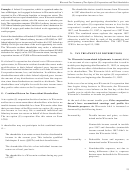 25
25 26
26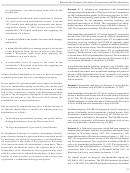 27
27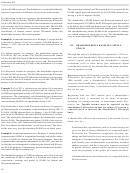 28
28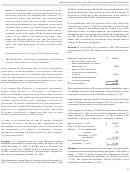 29
29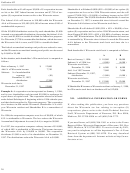 30
30








